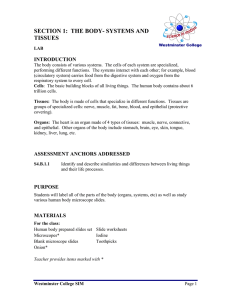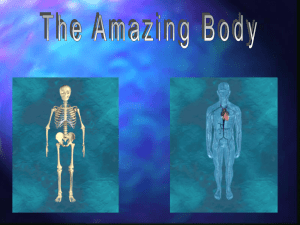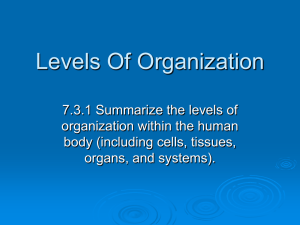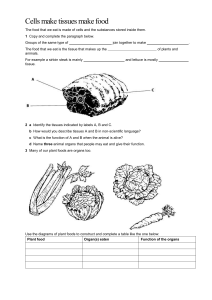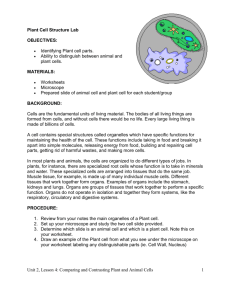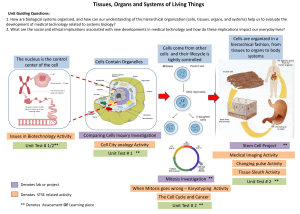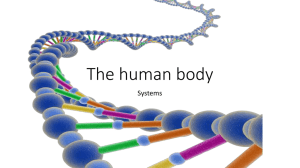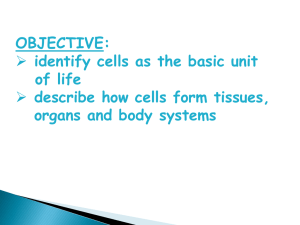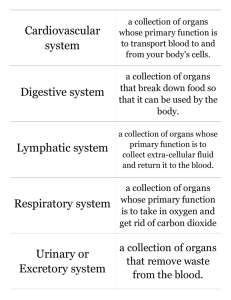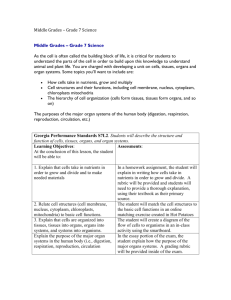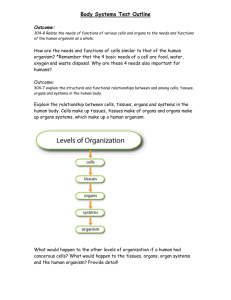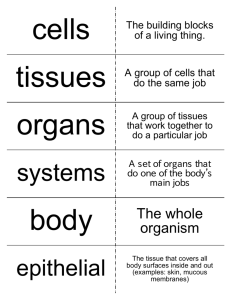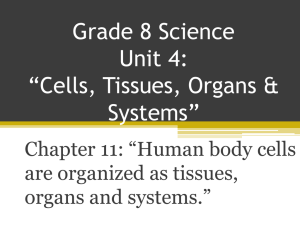Tissues, Organs, Systems
advertisement
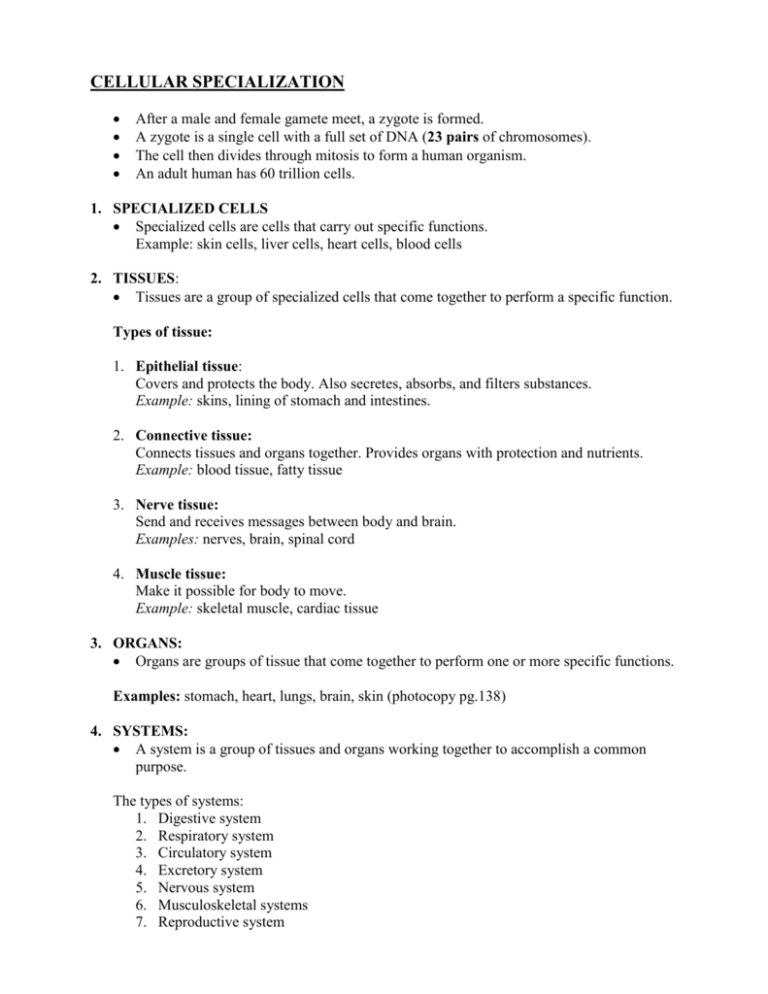
CELLULAR SPECIALIZATION After a male and female gamete meet, a zygote is formed. A zygote is a single cell with a full set of DNA (23 pairs of chromosomes). The cell then divides through mitosis to form a human organism. An adult human has 60 trillion cells. 1. SPECIALIZED CELLS Specialized cells are cells that carry out specific functions. Example: skin cells, liver cells, heart cells, blood cells 2. TISSUES: Tissues are a group of specialized cells that come together to perform a specific function. Types of tissue: 1. Epithelial tissue: Covers and protects the body. Also secretes, absorbs, and filters substances. Example: skins, lining of stomach and intestines. 2. Connective tissue: Connects tissues and organs together. Provides organs with protection and nutrients. Example: blood tissue, fatty tissue 3. Nerve tissue: Send and receives messages between body and brain. Examples: nerves, brain, spinal cord 4. Muscle tissue: Make it possible for body to move. Example: skeletal muscle, cardiac tissue 3. ORGANS: Organs are groups of tissue that come together to perform one or more specific functions. Examples: stomach, heart, lungs, brain, skin (photocopy pg.138) 4. SYSTEMS: A system is a group of tissues and organs working together to accomplish a common purpose. The types of systems: 1. Digestive system 2. Respiratory system 3. Circulatory system 4. Excretory system 5. Nervous system 6. Musculoskeletal systems 7. Reproductive system
